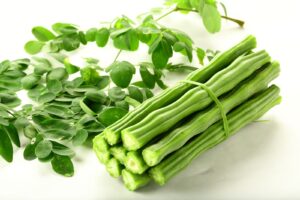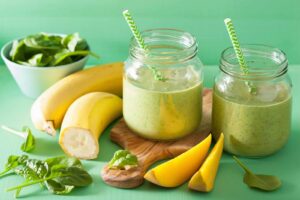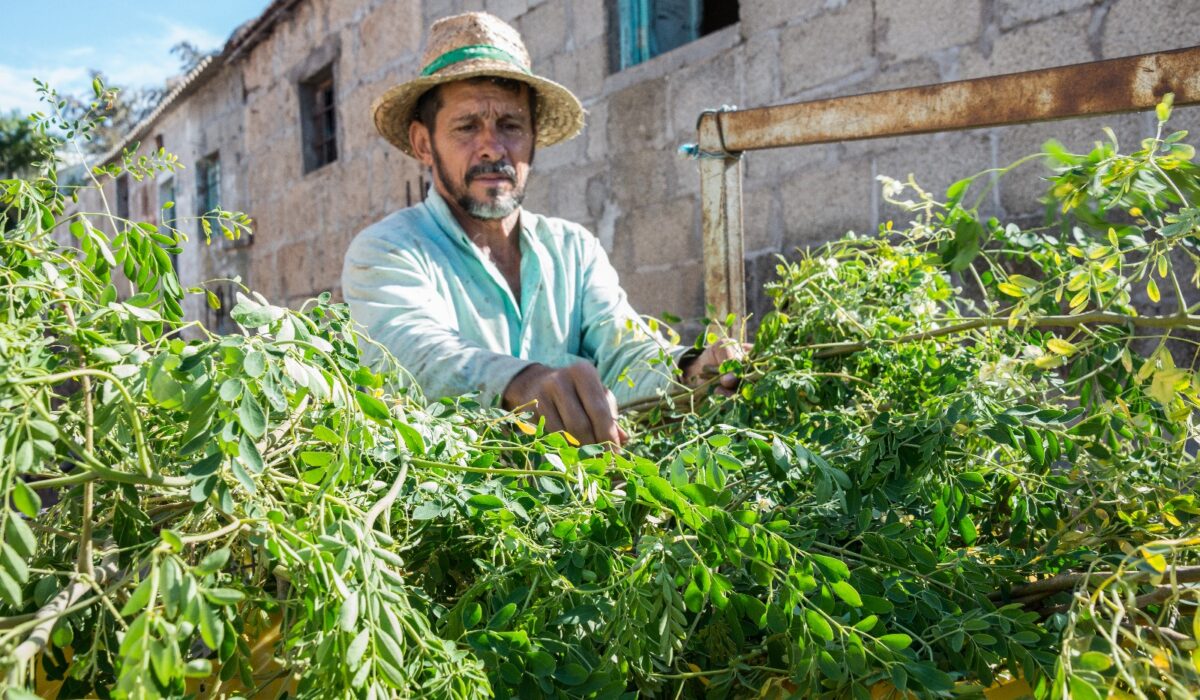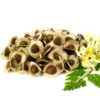How to Wash Moringa Leaves: Guide
Moringa leaves are a nutrient-dense superfood that have gained popularity in recent years due to their health benefits. However, it’s important to note that these leaves need to be washed properly before consumption to remove any dirt and potential contaminants. In this article, we will provide you with a step-by-step guide on how to wash moringa leaves, ensuring optimal cleanliness and nutrition. From harvesting to drying, we will cover every aspect of the washing process and provide you with additional tips to maintain the highest hygiene standards. So, whether you’re a moringa enthusiast or a curious foodie, read on to learn how to properly wash and enjoy this superfood.
Step 1: Harvesting Moringa Leaves

To ensure the best quality and freshness of your moringa leaves, it’s important to harvest them at the right time and in the proper way. Moringa trees are fast-growing and can be harvested throughout the year, but it’s recommended to harvest the leaves during the early morning when they are still full of water and nutrients. Growing moringa seeds can be a satisfying and enjoyable experience.
Growing a moringa plant from seed can be a rewarding and fulfilling experience. ensure you have fresh moringa seeds that are sourced from a reputable supplier. Start by preparing a well-draining potting mix, combining equal parts of compost, sand, and loam soil.
When harvesting the leaves, it’s important to use sharp and clean pruning shears or scissors to avoid damaging the plant. Cut the leaves from the tree stem about an inch away from the base of the leaf. Be sure to leave enough leaves on the tree to keep it healthy and thriving.
After harvesting, inspect the leaves for any damages or signs of disease or insect infestations. Discard any damaged leaves as they may affect the quality of the remaining leaves. Once you’ve harvested and sorted the leaves, you can store them in a clean and dry place until you’re ready to wash them.
By following these simple steps, you’ll be able to harvest the freshest and most nutritious moringa leaves for your consumption. Moving on to the next step, let’s explore how to properly prepare the leaves for washing.
Step 2: Preparing Moringa Leaves for Washing

Once you’ve harvested the moringa leaves, it’s important to prepare them for washing. The preparation process includes removing the stems and damaged leaves, as well as rinsing the leaves with clean water.
To start, use a sharp knife or scissors to remove the stems from the leaves. Moringa stems are tough and fibrous, and they can affect the texture of the leaves when cooked or consumed. Discard the stems or save them for other uses.
Next, inspect the leaves for any damages or yellowing. Remove any damaged or yellowing leaves as they may contain toxins and affect the quality of the remaining leaves.
Once you’ve removed the stems and damaged leaves, rinse the leaves thoroughly with clean water. Use a colander or a strainer to help remove any dirt or debris that may be stuck to the leaves.
By properly preparing the moringa leaves, you’ll ensure that only the freshest and healthiest leaves are washed and consumed. Next, let’s move on to the washing process itself.
Step 3: Washing Moringa Leaves
Now that you’ve prepared the moringa leaves, it’s time to wash them. Washing the leaves will remove any remaining dirt and potential contaminants, ensuring optimal cleanliness and nutrition.
To start, fill a clean bowl or sink with clean water. Add a few drops of vegetable-based detergent or vinegar to help remove any stubborn dirt or residues. Avoid using harsh chemicals or soap, as they may affect the quality and taste of the leaves.
Add the prepared moringa leaves to the soapy water and soak them for a few minutes. Gently agitate the leaves with your hands or a utensil to help loosen any dirt or debris that may be stuck to the leaves.
Once the leaves have been soaked, drain the soapy water and rinse the leaves thoroughly with clean water. Repeat the rinsing process until the water runs clear and no soapy residue is left.
Finally, shake off any excess water from the leaves and spread them out on a clean surface to air dry. Alternatively, you can use a salad spinner or a dehydrator to speed up the drying process.
By following these steps, you’ll ensure that your moringa leaves are properly washed and ready to be used in your favorite dishes or consumed as a nutritious snack. In the next step, we’ll discuss how to properly dry the leaves after washing.
Step 4: Drying Moringa Leaves

After washing the moringa leaves, it’s important to dry them properly before storing or using them. Proper drying will prevent mold and bacteria growth and will also ensure that the leaves maintain their flavor and nutritional value.
To start, shake off any excess water from the leaves. You can also use a salad spinner or a clean towel to help absorb any remaining moisture.
Next, spread the leaves out on a clean and dry surface. Avoid using a surface that may harbor bacteria or dust, such as a countertop or a cutting board.
Allow the leaves to air dry completely, which may take a few hours to a few days depending on the humidity and temperature of the room. You can also speed up the drying process by using a dehydrator or an oven set to a low temperature.
Once the leaves are completely dry and crisp, store them in an airtight container or a plastic bag. Make sure to label the container with the date of harvest and the type of leaves for future reference.
By properly drying the moringa leaves, you’ll ensure that they maintain their quality and freshness for an extended period of time. Now that you’ve learned how to properly wash and dry moringa leaves, you’re ready to enjoy the many health benefits that this superfood has to offer.
The unique combination of a sweet taste and remarkable nutritional value makes moringa seeds a versatile and satisfying ingredient that can enhance the flavor and nutrition of a wide range of dishes.
Are Moringa Seeds Safe to Eat? Moringa seeds are generally safe to eat and offer a range of health benefits. However, it’s important to note that the outer shells of moringa seeds are tough and indigestible, so they should not be consumed as is. Instead, it is recommended to consume the kernels inside the seeds, which are soft and edible.

Additional Tips for Optimal Moringa Leaf Washing
In addition to the four main steps for washing moringa leaves, there are a few additional tips that can help optimize the cleanliness and nutrition of the leaves.
- Use fresh water: Make sure to use fresh and clean water for washing the leaves. Avoid using water that has been sitting in a container for an extended period of time, as it may harbor bacteria or impurities.
- Be gentle: While it’s important to remove any dirt or debris from the leaves, be gentle when handling them. Rough handling can damage the leaves and affect their flavor and nutritional value.
- Wash small batches: If you have a large quantity of moringa leaves to wash, it’s best to wash them in small batches. This will help ensure that each leaf is properly cleaned and dried.
- Store the leaves properly: After drying the moringa leaves, store them in a cool and dry place away from direct sunlight. This will help preserve their quality and freshness.
- Use gloves: If you have sensitive skin or are allergic to certain chemicals, consider wearing gloves when washing the leaves to avoid any potential skin irritation.
By following these additional tips, you’ll ensure that your moringa leaves are washed and prepared in the best possible way for optimal cleanliness and nutrition.
How to Dry Moringa Leaves: A Comprehensive Guide – Moringa Products USA
In Summary
Moringa leaves are a nutrient-dense superfood that offer a wide range of health benefits. However, it’s important to properly wash and prepare the leaves to ensure optimal cleanliness and nutrition. By following the step-by-step guide outlined in this article, you can ensure that your moringa leaves are properly harvested, prepared, washed, and dried for maximum freshness and quality.
Harvesting the leaves at the right time and preparing them properly for washing can help ensure that they are clean and free from any impurities. When washing the leaves, it’s important to use fresh water, be gentle, and avoid using harsh chemicals or soaps. Properly drying the leaves can help prevent mold and bacteria growth, and also helps to maintain their flavor and nutritional value.
By following these tips, you can ensure that your moringa leaves are properly washed and prepared for use in a variety of dishes or as a nutritious snack. Incorporating moringa leaves into your diet is a great way to boost your overall health and well-being. So why not give it a try and enjoy the many benefits of this amazing superfood?
References
- “Moringa Oleifera: A Review on Nutritive Importance and Its Medicinal Application” by M. Sharif et al. (2018) – https://www.ncbi.nlm.nih.gov/pmc/articles/PMC5846208/
- “Moringa Oleifera: A Review of the Medical Evidence for Its Nutritional, Therapeutic, and Prophylactic Properties. Part 1” by L. Mbikay (2012) – https://www.ncbi.nlm.nih.gov/pmc/articles/PMC3290775/
Moringa With Barry stores offer a variety of moringa products. These include: Moringa Powder, Moringa Tea, Moringa Capsules and Moringa Oil.




